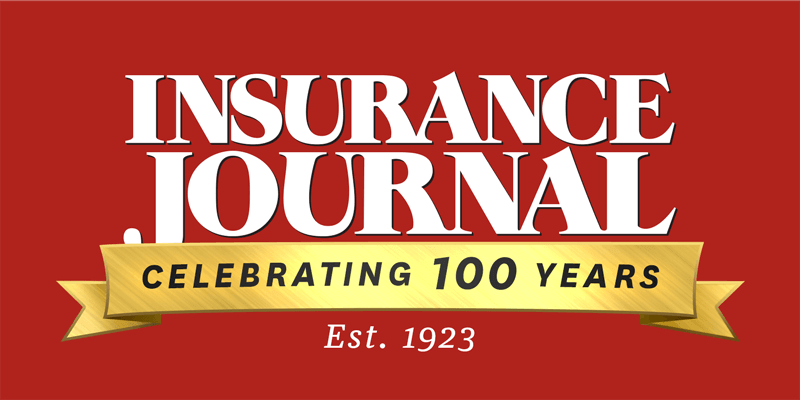This post is part of a series sponsored by CoreLogic.
Due to the ever-changing insurance market, property and casualty insurers across the country face multiple challenges today that can commonly disrupt their business planning and operations. The increasing severity and frequency of weather-related catastrophes, such as wildfires, have added complexity to the insurance landscape. Moreover, insurers are facing new compliance requirements set by state governments, making the regulatory atmosphere more demanding.
This trend of increasing state wildfire regulations on insurance companies is apparent in California and Oregon. While both states share a push for mitigation efforts, they have differing legal requirements.
The California Department of Insurance (CDI) requires the incorporation of 12 mandatory mitigation factors and increased transparency to policyholders, while Oregon’s Senate Bill 82 – which will come into effect on January 1, 2024 – focuses primarily on transparency surrounding homeowner insurance policies. This Oregon bill mandates that insurers provide a full spectrum of wildfire risk information to their policyholders.
Some of this information includes:
- In plain language, a description of how wildfire risk scores and classifications are determined, including a description of any general variables the insurer considers;
- The range of wildfire risk scores or classifications that could potentially be assigned to a property; and,
- The relative position of the wildfire risk score or classification assigned to the property.
Challenges for Insurers
Carriers in Oregon – and other states whose regulatory measures are becoming more stringent – face the challenge of communicating complex insurance policy information to homeowners in an easy-to-understand way.
Complying with the new requirements will involve adaptation in insurers’ workflows, making it necessary to implement these changes upon writing new business, renewals, and cancellations.
Solutions for Oregon Insurers
To effectively comply with Oregon’s new regulation, insurers within the state must form a new strategy for communicating with customers. Given policy volume, the manual generation of detailed explanations for each policyholder would be nearly impossible. Instead, insurers should explore leveraging automated tools that generate reports that contain all the information to which policyholders are entitled.
Achieving Regulatory Compliance with Wildfire Risk Score
CoreLogic has prioritized building strong foundational tools to facilitate compliance with state insurance regulations. The CoreLogic® Wildfire Risk Score (WFRS) is a deterministic wildfire model that evaluates the risk of wildfire for a property on a scale of 5 to 100. The score takes into account various factors such as slope, aspect, vegetation, surface composition, drought, wind conditions, proximity to high-risk areas, and historical data. Since its creation, WFRS has been a trusted tool for use by insurers in assessing wildfire risk across its entire geographic extent, covering 16 states including Oregon.
Enhancing Wildfire Risk Score
Coming fall 2023, CoreLogic’s Wildfire Risk Score will be enhanced to include detailed explanations of the factors influencing the score in plain language. This new reporting feature can be handed directly to policy holders with no editing required for continued workflow automation and regulatory compliance. This new enhancement will be available, upon request, to all carriers leveraging WFRS in all 16 states.
What This Means for Oregon Policyholders and Insurers
The new regulation in Oregon will provide policyholders with more insight into their property’s wildfire risk and its potential influence on their premiums. In turn, information from CoreLogic’s Wildfire Risk Score report will provide high-risk policyholders with more insight into the potential for implementing property level mitigation measures.
For insurers, this regulation provides an opportunity to engage in open communication with policyholders about best practices, thus mitigating against potential future loss.
CoreLogic’s Commitment
Increasing state wildfire regulations pose significant challenges for property and casualty insurers across the country. However, with tools like CoreLogic’s Wildfire Risk Score and its enhanced reporting features, insurers can navigate these regulations effectively while providing policyholders with crucial insights into their property’s risk. This proactive approach will facilitate meaningful conversations between insurers and policyholders.
As the insurance landscape continues to evolve, CoreLogic remains committed to pivoting and adapting to meet market demands, fostering safer and more resilient communities in the face of future wildfires.
To learn more, contact us today.
©2023 CoreLogic, Inc. All rights reserved. The CoreLogic® statements and information in this blog post may not be reproduced or used in any form without express written permission. While all the CoreLogic statements and information are believed to be accurate, CoreLogic makes no representation or warranty as to the completeness or accuracy of the statements and information and assumes no responsibility whatsoever for the information and statements or any reliance thereon. CoreLogic® is the registered trademark of CoreLogic, Inc. and/or its subsidiaries.
Topics Catastrophe Natural Disasters Legislation Wildfire Oregon
Was this article valuable?
Here are more articles you may enjoy.


 2023 to Test Recent Growth in Private Flood Insurance Market
2023 to Test Recent Growth in Private Flood Insurance Market  Montana Brokerage Owner Admits to Defrauding Customers
Montana Brokerage Owner Admits to Defrauding Customers  Farmers Insurance Laying Off 11% of Workforce, Citing Industry Challenges
Farmers Insurance Laying Off 11% of Workforce, Citing Industry Challenges  Warren Buffett’s Bet on Mild Florida Storm Season Faces Test With Hurricane Idalia
Warren Buffett’s Bet on Mild Florida Storm Season Faces Test With Hurricane Idalia 


